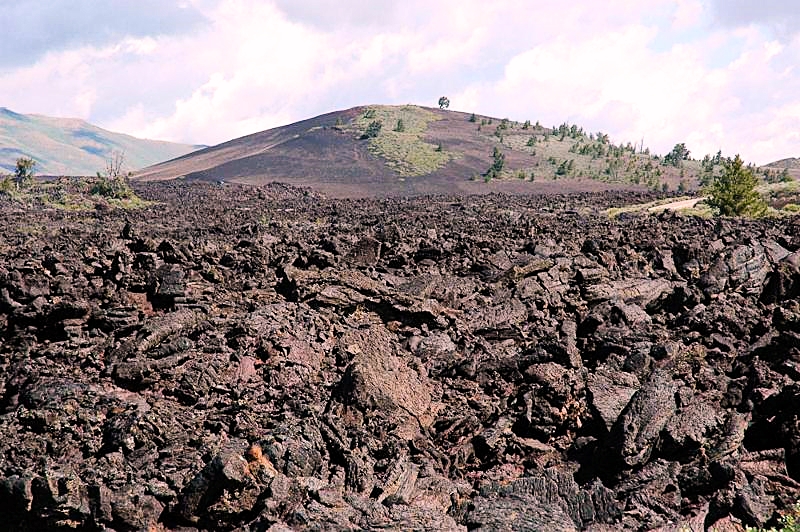When enforcement of the ‘Buffers Act’ begins in a few months, all productive economic activity within the buffer zones will be prohibited. Not only is the value of the land taken away, but all potential value from future economic use will also be lost.
by Marjorie Haun
In April of 2016, Mark Dayton (D), the Governor of Minnesota approved a state bill that would force thousands of private landowners in rural regions of the state to create ‘buffers’ along lakes, ponds, rivers, tributaries, creeks and ditches that may run through their property. Although a January press release from the Governor’s office claims the program is ‘voluntary,’ the language in the Act makes it clear that ‘landowners owning property adjacent to a water body identified and mapped on a buffer protection map must maintain a buffer to protect the state’s water resources…’ The Riparian Protection and Water Quality Practices Act requires property owners to set aside 50 feet of buffer space along both sides of waterways. The Act states, in part:
Subd. 3.Water resources riparian protection requirements on public waters and public drainage systems.
(a) Except as provided in paragraph (b), landowners owning property adjacent to a water body identified and mapped on a buffer protection map must maintain a buffer to protect the state’s water resources as follows:
(1) for all public waters, the more restrictive of:
(i) a 50-foot average width, 30-foot minimum width, continuous buffer of perennially rooted vegetation; or
(ii) the state shoreland standards and criteria adopted by the commissioner under section 103F.211; and
(2) for public drainage systems established under chapter 103E, a 16.5-foot minimum width continuous buffer as provided in section 103E.021, subdivision 1. The buffer vegetation shall not impede future maintenance of the ditch.
(b) A landowner owning property adjacent to a water body identified in a buffer protection map and whose property is used for cultivation farming may meet the requirements under paragraph (a) by adopting an alternative riparian water quality practice, or combination of structural, vegetative, and management practices, based on the Natural Resources Conservation Service Field Office Technical Guide or other practices approved by the board, that provide water quality protection comparable to the buffer protection for the water body that the property abuts. Included in these practices are retention ponds and alternative measures that prevent overland flow to the water resource.
(c) The width of a buffer on public waters must be measured from the top or crown of the bank. Where there is no defined bank, measurement must be from the edge of the normal water level. The width of the buffer on public drainage systems must be measured as provided in section 103E.021, subdivision 1.
(d) Upon request by a landowner or authorized agent or operator of a landowner, a technical professional employee or contractor of the soil and water conservation district or its delegate may issue a validation of compliance with the requirements of this subdivision. The soil and water conservation district validation may be appealed to the board as described in subdivision 9.
(e) Buffers or alternative water quality practices required under paragraph (a)
Setting aside arguments about legality and jurisdiction, it’s important to first consider the amount of privately-owned land that could be taken out productivity.
One acre is 43,560 square feet.
A fifty-foot buffer is one mile long is 264,000 square feet per mile, or about 6.1 total acres. A stream has two banks, so needs 100 feet of buffer space according to the Act, which comes out to 12.12 acres per stream mile. Not all bodies of water in Minnesota are impacted in the Buffers Act, nevertheless, private landowners could effectively have hundreds of thousands of acres of productive land put under lock and key by the Minnesota Department of Natural Resources.
Although the law directs local soil and water conservation districts to assist landowners in meeting the ‘buffers’ requirements, the law, set to be implemented this year, is intended to be strictly enforced.
Subd. 6.Local implementation and assistance.
(a) Soil and water conservation districts must assist landowners with implementation of the water resource riparian protection requirements established in this section. For the purposes of this subdivision, assistance includes planning, technical assistance, implementation of approved alternative practices, and tracking progress toward compliance with the requirements.
(b) The commissioner or the board must provide sufficient funding to soil and water conservation districts to implement this section.
Compliance requirements in the law are rigorous, but penalties for insufficient ‘corrective actions’ are unclear:
Subd. 7.Corrective actions.
(a) If the soil and water conservation district determines a landowner is not in compliance with this section, the district must notify the county or watershed district with jurisdiction over the noncompliant site and the board. The county or watershed district with jurisdiction or the board must provide the landowner with a list of corrective actions needed to come into compliance and a practical timeline to meet the requirements in this section. The county or watershed district with jurisdiction must provide a copy of the corrective action notice to the board.
(b) A county or watershed district exercising jurisdiction under this subdivision and the enforcement authority granted in section 103B.101, subdivision 12a, shall affirm their jurisdiction and identify the ordinance, rule, or other official controls to carry out the compliance provisions of this section and section 103B.101, subdivision 12a, by notice to the board prior to March 31, 2017. A county or watershed district must provide notice to the board at least 60 days prior to the effective date of a subsequent decision on their jurisdiction.
(c) If the landowner does not comply with the list of actions and timeline provided, the county or watershed district may enforce this section under the authority granted in section 103B.101, subdivision 12a, or by rule of the watershed district or ordinance or other official control of the county. Before exercising administrative penalty authority, a county or watershed district must adopt a plan consistent with the plan adopted by the board containing procedures for the issuance of administrative penalty orders and may issue orders beginning November 1, 2017. If a county or watershed district with jurisdiction over the noncompliant site has not adopted a plan, rule, ordinance, or official control under this paragraph, the board must enforce this section under the authority granted in section 103B.101, subdivision 12a.
(d) If the county, watershed district, or board determines that sufficient steps have been taken to fully resolve noncompliance, all or part of the penalty may be forgiven.
(e) An order issued under paragraph (c) may be appealed to the board as provided under subdivision 9.
(f) A corrective action is not required for conditions resulting from a flood or other act of nature.
(g) A landowner agent or operator of a landowner may not remove or willfully degrade a riparian buffer or water quality practice, wholly or partially, unless the agent or operator has obtained a signed statement from the property owner stating that the permission for the work has been granted by the unit of government authorized to approve the work in this section or that a buffer or water quality practice is not required as validated by the soil and water conservation district. Removal or willful degradation of a riparian buffer or water quality practice, wholly or partially, by an agent or operator is a separate and independent offense and may be subject to the corrective actions and penalties in this subdivision.
When enforcement of the ‘Buffers Act’ begins in a few months, all productive economic activity within the buffer zones will be prohibited. Not only is the value of the land taken away, but all potential value from future economic use will also be lost. This means pastures, cropland, and even recreational outfits within the buffer zones will be profoundly impacted. Trees adjacent to bodies of water will also be untouchable, which means a loss of saw log value, as well as impediments to proper forest management.
The Act also infers ‘averaging’ of the buffers because the minimum allowed buffer width is thirty feet, so long as the buffer averages fifty feet for its length. This means that some portions of the buffer could be upwards of a hundred feet in width in order to meet that fifty foot average.
Losses to landowners are expected to be significant, and the ‘Buffers Act’ acknowledges this reality, but fails to provide specifics on how compensation may be sought, or will be funded. But perhaps more significantly, the cost of creating the buffers is put on the shoulders of landowners. Subdivision 10 reads:
Subd. 10.Landowner financial assistance and public drainage system procedure.
(a) A landowner or drainage authority may contact the soil and water conservation district for information on how to apply for local, state, or federal cost-share grants, contracts, or loans that are available to establish buffers or other water resource protection measures.
(b) The provisions of sections 103E.011, subdivision 5; 103E.021; and 103E.715 may be used in advance or retroactively to acquire or provide compensation for all or part of the buffer strip establishment or alternative riparian water quality practices as required under subdivision 3, paragraph (a) or (b).
According to a January 17, 2017 press release, the State of Minnesota signed an agreement with the USDA for $350 million in federal funding to aid in implementation of the Buffers Act, but the state has yet to come up with an additional $150 million in matching funds. The legislature has appropriated $54.8 million in past legislative sessions, but that leaves roughly 60 percent of that funding yet in limbo. The question remains, if the Minnesota Legislature does not match its obligation, do the federal funds evaporate, leaving Minnesota landowners with the full cost?
In February, Minnesota State Senator Bill Weber (R-District 22) held an informational hearing on the ‘Buffers Act.’ His press release detailed concerns of those in his district who could be impacted:
Buffer Strips
The Minnesota Department of Natural Resources (DNR) is moving forward on enforcing the mandated buffer strips that are to be placed on many farmers’ lands. In response, a joint informational committee hearing was held earlier this week to hear from stakeholders as we begin to chart a path forward. If you are unfamiliar with the idea of riparian buffers, in 2015 the legislature passed a law requiring buffers to be placed around all watercourses. In 2016, a distinction between public and private ditches was clarified, but many landowners were still left questioning what may be required. According to the law, buffer strips averaging 50 feet will be required to be planted adjacent to all “public waters” in Minnesota beginning this November and buffers of a 16.5-foot minimum width will be required around all public ditches in 2018.
During the informational hearing, support for local control was clear, especially from those who reside in agricultural-rich areas where this mandate would have the most significant effect. However, costs continue to be a concern. Currently, farmers and landowners can be reimbursed by the Conservation Reserve Program, which exists to incentivize farmers to implement various conservation efforts, including buffers. However, if that program disappears, no plan for payment exists to reimburse landowners for the value of their land eaten up by the buffer requirement.
The Minnesota Board of Soil and Water Resources demonstrated support for both local control and local approval of alternative practices from individual soil and water conservation districts, but the mounting costs for counties are unmanageable, especially as state aid to counties for this very purpose was vetoed by Governor Dayton in last year’s tax bill.
It is unreasonable to suggest that farmers and landowners be responsible for a top-down mandate that is not only costly to them, but also to the counties. All of this is coming without the freedom for counties to do what may best fit their area, and without an appeals process for what may constitute a “designated public water.” Until we can plot a way to move forward, and given the number of circumstances which have prompted swift and harsh backlash from community members, I believe there is a basis for a possible delay in the implementation deadline or an adjustment in any fines imposed on noncompliant landowners.
There is likely to be opposition to the implementation and enforcement of the ‘Buffers Act’ until its devastating impact to landowners, nebulous funding proposals, and outrageous mandates are sufficiently addressed.

Free Range Report


